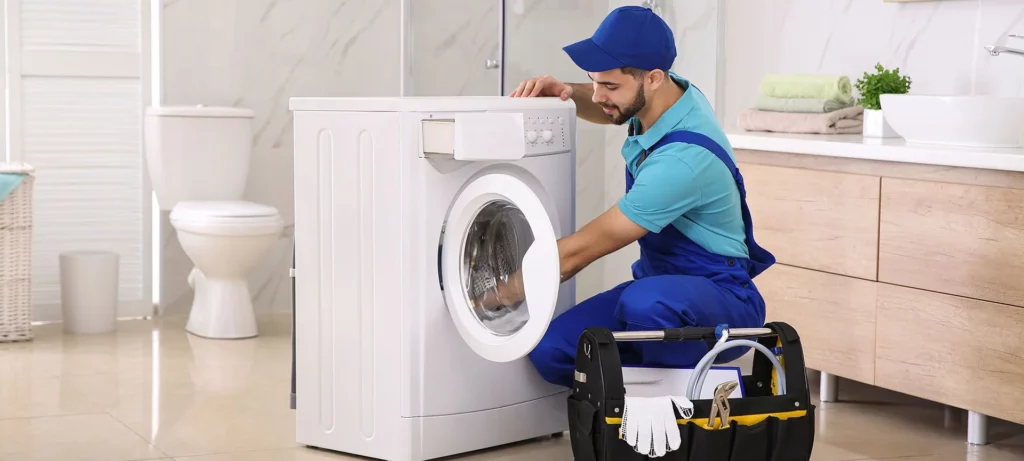Are you tired of your automatic washing machine acting up? It can be frustrating when your laundry day is interrupted by a malfunctioning washer. But fear not, we’re here to help you navigate the world of automatic washing machine repair. In this detailed guide, we’ll cover everything you need to know to get your washer back in top shape. From common issues to troubleshooting steps and expert tips, we’ve got you covered.
Introduction
Welcome to the ultimate guide on automatic washing machine repair. We understand the frustration that comes with a malfunctioning washer, which is why we’ve put together this comprehensive resource to assist you in resolving the issue. Whether your washing machine is making strange noises, leaking, or not spinning, we’ll walk you through the process of diagnosing and fixing the problem.
Common Automatic Washing Machine Issues
Automatic washing machines are complex appliances, and like any other, they can encounter various problems over time. Here are some common issues you might face:
- Noisy Operation: Is your washing machine making unusual sounds during the cycle? It could be due to a loose belt or worn-out bearings.
- Water Leaks: Water pooling around your washer can be a sign of a leaky hose, damaged seal, or a blocked drainage system.
- Spin Cycle Problems: If your washer isn’t spinning correctly, it may lead to clothes coming out sopping wet. This issue could be caused by a faulty lid switch or an unbalanced load.
- Drainage Issues: A clogged drain pump or filter can prevent your washing machine from draining water properly.
- Display Errors: Modern washing machines often have digital displays. Error codes on the display can provide valuable clues about the problem.
- Door Seal Mold: If you notice a foul odor coming from your washer, it might be due to mold growth on the door seal.
- Electrical Problems: Issues with the power supply or the control board can also disrupt your washer’s performance.
Troubleshooting Tips
Before diving into repairs, it’s a good idea to troubleshoot the problem. Here are some tips to help you identify the issue:
- Check for Loose Connections: Ensure all hoses, power cords, and drainage pipes are securely connected.
- Inspect for Obstructions: Look for any objects stuck in the drum or drainage system.
- Clean the Filter: A clogged filter can cause drainage problems. Remove and clean it regularly.
- Balance the Load: Avoid overloading your washing machine. Uneven loads can lead to spinning issues.
- Review Error Codes: Refer to your machine’s manual to decode error messages on the display.
DIY Repairs vs. Professional Help
Deciding whether to repair your washing machine yourself or hire a professional depends on your comfort level with DIY projects and the complexity of the issue. Simple tasks like unclogging a drain pipe or replacing a belt can often be handled by homeowners. However, if you’re unsure or dealing with electrical problems, it’s best to seek professional assistance to avoid any safety hazards.
Tools You’ll Need
For basic washing machine repairs, you’ll need the following tools:
- Screwdrivers (Phillips and flathead)
- Pliers
- Wrench
- Bucket (for water drainage)
- Replacement parts (if required)
Always ensure that your washing machine is unplugged before starting any repair work.
Safety First: Precautions Before Repair
Safety should be your top priority when attempting to repair any appliance. Here are some precautions to take:
- Turn Off Power: Unplug your washing machine and, if possible, disconnect it from the power source.
- Water Supply: Shut off the water supply to your washing machine to prevent leaks.
- Protective Gear: Wear gloves and safety goggles to protect yourself from sharp edges and any potential hazards.
- Read the Manual: Consult your washing machine’s manual for specific safety instructions.
Step-by-Step Repair Guide
We can’t cover every potential repair in this article, as each washing machine model is unique. However, we can provide a general overview of the repair process:
- Diagnosis: Identify the problem by following our troubleshooting tips or consulting your machine’s manual.
- Access the Inside: Remove the top or back panel of your washing machine to access the internal components.
- Inspect and Replace: Examine the components and replace any damaged parts. Common replacements include belts, hoses, and motors.
- Reassembly: Carefully reassemble the washing machine, ensuring all parts are in their correct positions.
- Test Run: Plug in the machine, turn on the water supply, and run a test cycle to confirm the issue is resolved.
If you’re uncomfortable with any step or unsure about your diagnosis, it’s best to consult a professional technician.
Cleaning and Maintenance
Preventive maintenance can extend the lifespan of your washing machine and reduce the need for repairs. Here are some simple maintenance tasks to consider:
- Clean the Drum: Remove lint, dirt, and soap residue from the drum regularly.
- Check Hoses: Inspect hoses for leaks or damage and replace them if necessary.
- Clean Filters: Keep filters clean to ensure proper water drainage.
- Level the Machine: Ensure your washer is level to prevent excessive vibrations.
- Use the Right Detergent: Follow manufacturer recommendations for detergent usage.
By following these maintenance tips, you can keep your washing machine running smoothly.


